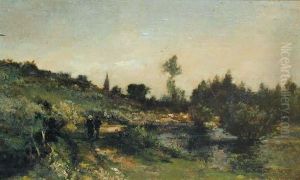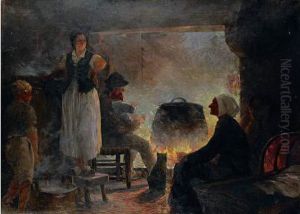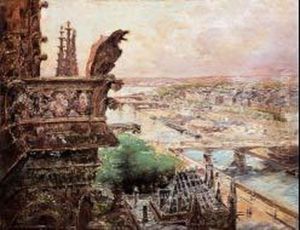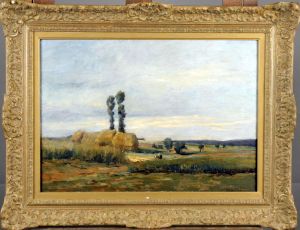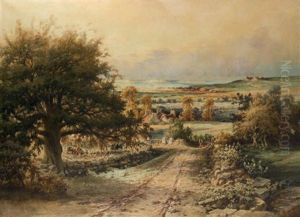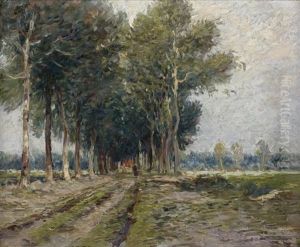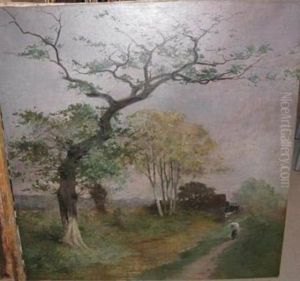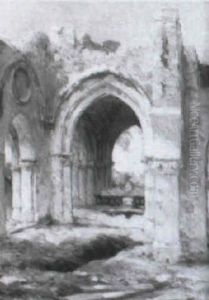Gaston Jobbe-Duval Paintings
Gaston Jobbe-Duval was a French painter, illustrator, and decorator born on October 31, 1841, in Rennes, France. He was active during the second half of the 19th century and the early 20th century, a period that witnessed significant transformations in the arts in France, with movements like Impressionism and Symbolism gaining prominence.
Jobbe-Duval began his artistic education at the École des Beaux-Arts in Rennes before moving to Paris, where he continued his studies under the guidance of renowned academic painters like Alexandre Cabanel. His early work was heavily influenced by the academic tradition, which emphasized classical themes, precise technique, and a polished finish. However, as his career progressed, he began to incorporate elements of other artistic movements, such as Symbolism, which often focused on mystical and dreamlike subjects.
Although he is less known than some of his contemporaries, Jobbe-Duval made a name for himself in the art world with his decorative works and illustrations. He was particularly noted for his murals in public and private buildings, including churches and town halls. His work as an illustrator was also significant, as he contributed to various literary works of the time, providing visual interpretations that complemented the narratives.
In 1875, Jobbe-Duval received recognition for his painting 'Mézala, the Daughter of the Sun,' which was exhibited at the Paris Salon, an annual exhibition that was the official art exhibition of the Académie des Beaux-Arts. This painting, along with others exhibited at the Salon, helped establish his reputation as a skilled painter.
Gaston Jobbe-Duval's career spanned several decades, during which he participated in various exhibitions and received commissions for his work. Despite the changing artistic landscape of the time, he managed to carve out a niche for himself and maintain a successful career. He passed away on April 12, 1920, in Paris. Today, his works can be found in various collections and museums, serving as examples of the eclectic styles that characterized French art in the late 19th and early 20th centuries.
